
How to Use Power Supply 5v & 12v: Examples, Pinouts, and Specs
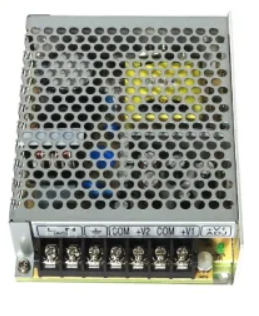
 Design with Power Supply 5v & 12v in Cirkit Designer
Design with Power Supply 5v & 12v in Cirkit DesignerIntroduction
The Power Supply 5V & 12V is a versatile device designed to convert electrical energy from an input source (such as AC mains or a DC source) into stable 5V and 12V outputs. These outputs are commonly used to power a wide range of electronic circuits, modules, and devices. The dual-voltage output makes it ideal for applications requiring multiple voltage levels, such as microcontrollers, sensors, motors, and communication modules.
Explore Projects Built with Power Supply 5v & 12v
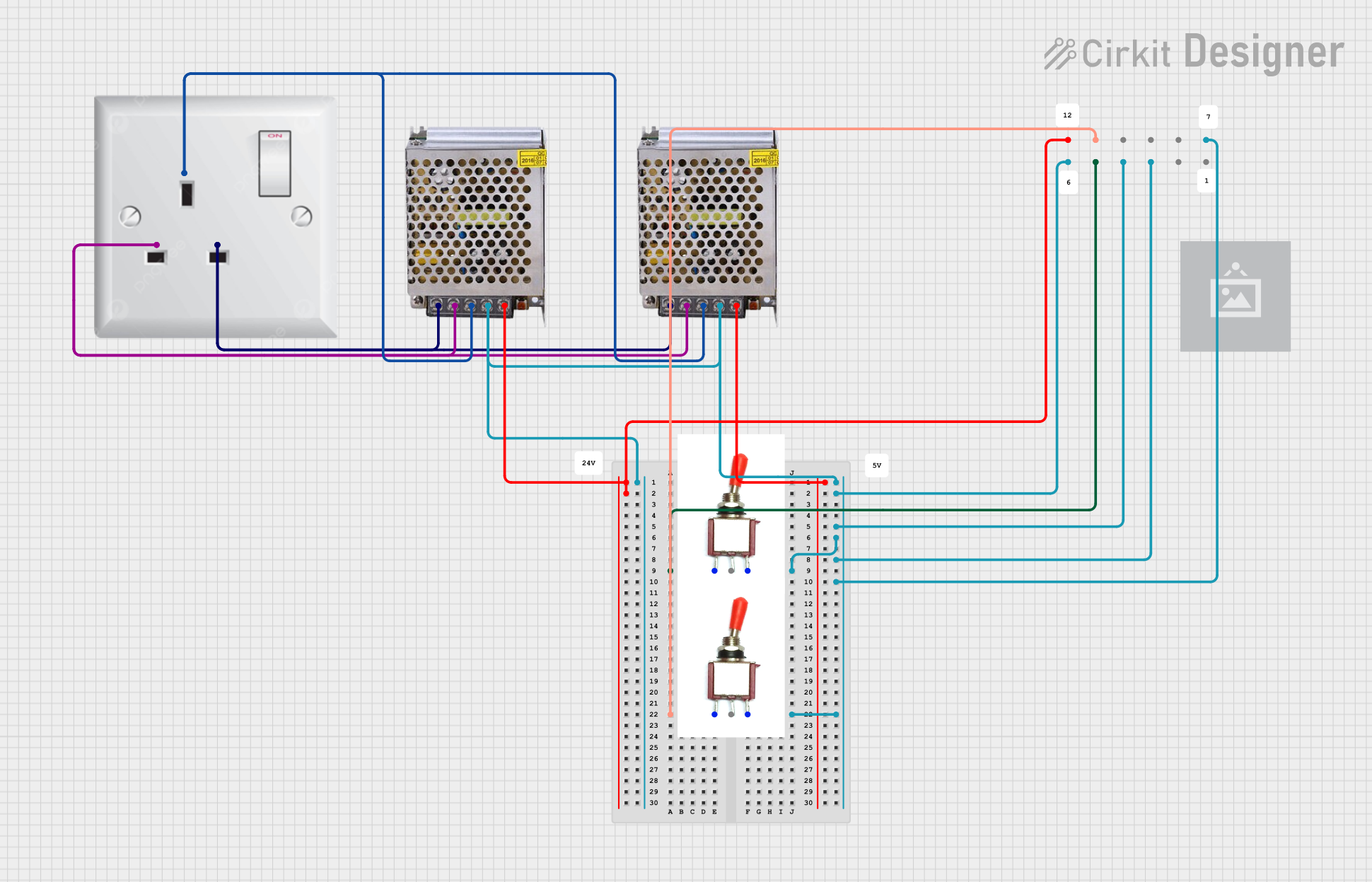
 Open Project in Cirkit Designer
Open Project in Cirkit Designer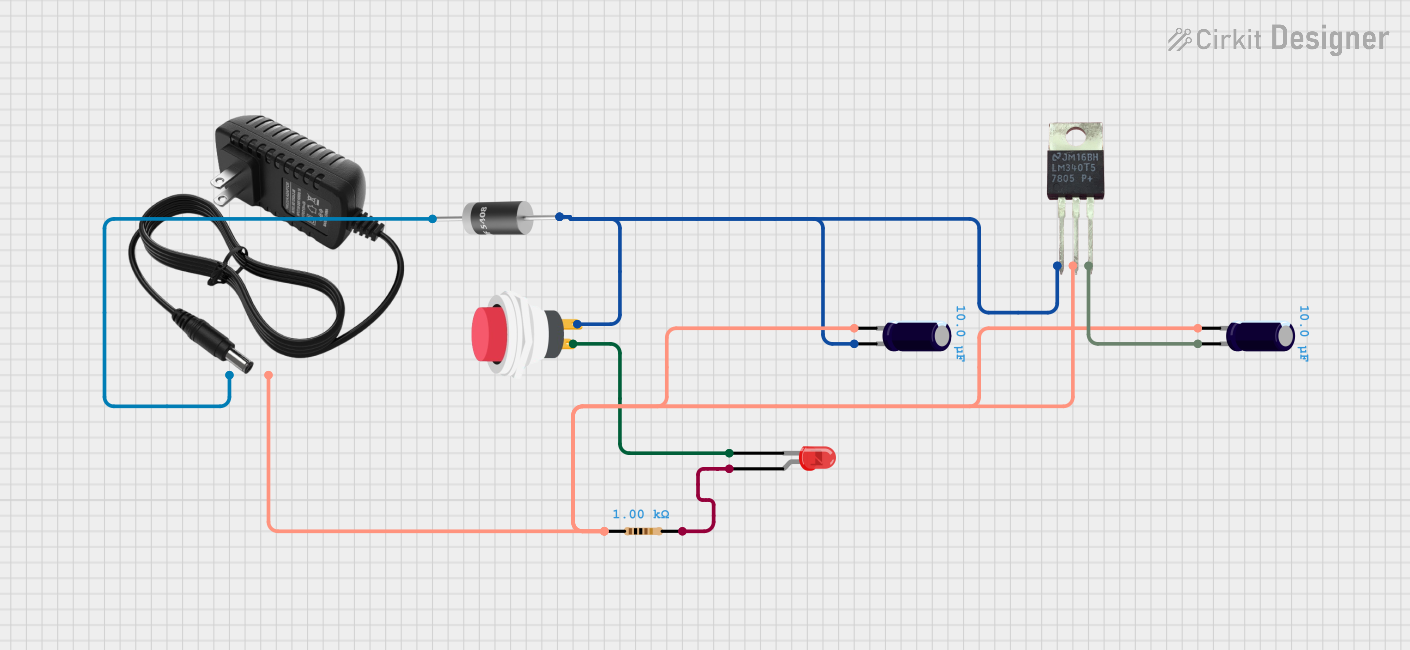
 Open Project in Cirkit Designer
Open Project in Cirkit Designer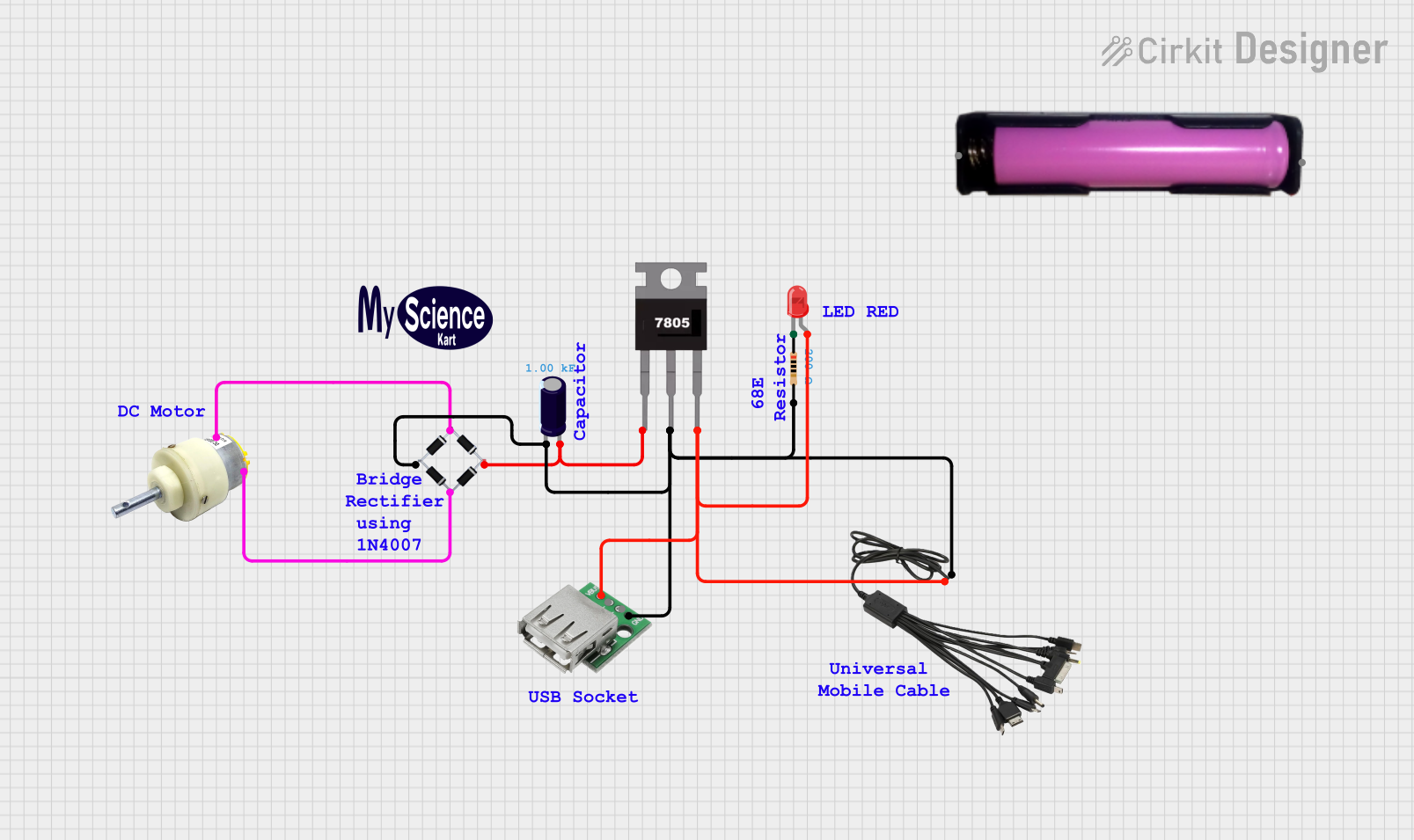
 Open Project in Cirkit Designer
Open Project in Cirkit Designer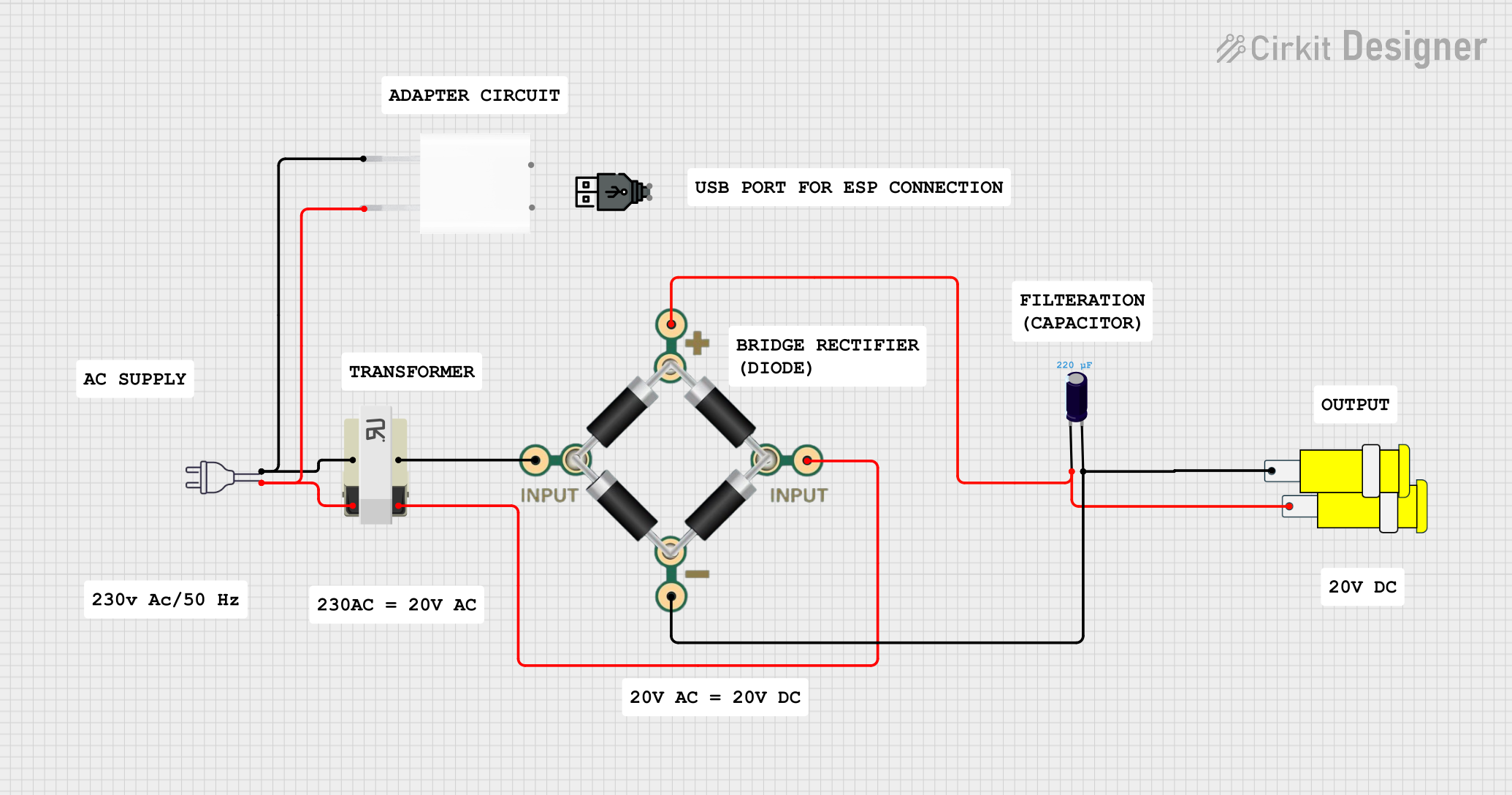
 Open Project in Cirkit Designer
Open Project in Cirkit DesignerExplore Projects Built with Power Supply 5v & 12v

 Open Project in Cirkit Designer
Open Project in Cirkit Designer
 Open Project in Cirkit Designer
Open Project in Cirkit Designer
 Open Project in Cirkit Designer
Open Project in Cirkit Designer
 Open Project in Cirkit Designer
Open Project in Cirkit DesignerCommon Applications and Use Cases
- Powering microcontroller boards (e.g., Arduino, Raspberry Pi)
- Supplying voltage to sensors, relays, and actuators
- Driving DC motors and stepper motors
- Providing power to communication modules (e.g., Wi-Fi, Bluetooth, GSM)
- General-purpose use in prototyping and development projects
Technical Specifications
Below are the key technical details of the Power Supply 5V & 12V:
| Parameter | Specification |
|---|---|
| Input Voltage Range | 100V - 240V AC (50/60Hz) |
| Output Voltage | 5V DC, 12V DC |
| Output Current (5V) | Up to 2A |
| Output Current (12V) | Up to 1A |
| Power Rating | 24W (maximum) |
| Efficiency | ≥ 85% |
| Ripple and Noise | ≤ 50mV (5V), ≤ 120mV (12V) |
| Operating Temperature | -10°C to 50°C |
| Protection Features | Overload, Short Circuit, Overvoltage |
Pin Configuration and Descriptions
The Power Supply 5V & 12V typically has the following input and output connections:
| Pin/Terminal | Description |
|---|---|
| AC Input L | Live wire connection for AC mains input |
| AC Input N | Neutral wire connection for AC mains input |
| GND | Ground connection for DC output |
| +5V | 5V DC output |
| +12V | 12V DC output |
Usage Instructions
How to Use the Component in a Circuit
Connect the Input:
- Ensure the input voltage is within the specified range (100V - 240V AC).
- Connect the live (L) and neutral (N) wires of the AC mains to the respective input terminals of the power supply.
Connect the Outputs:
- Use the +5V and GND terminals to power devices requiring 5V DC.
- Use the +12V and GND terminals to power devices requiring 12V DC.
- Ensure the total current drawn from each output does not exceed the rated limits (2A for 5V, 1A for 12V).
Verify Connections:
- Double-check all connections to avoid short circuits or incorrect wiring.
- Use a multimeter to confirm the output voltages before connecting sensitive devices.
Power On:
- Once all connections are secure, power on the device by supplying AC mains input.
- The power supply will regulate the input and provide stable 5V and 12V outputs.
Important Considerations and Best Practices
- Load Regulation: Ensure the connected load does not exceed the maximum current rating for each output.
- Heat Dissipation: Place the power supply in a well-ventilated area to prevent overheating.
- Polarity: Always observe correct polarity when connecting devices to the output terminals.
- Safety: Avoid touching the input terminals when the power supply is connected to AC mains.
Example: Using with an Arduino UNO
The 5V output of the power supply can be used to power an Arduino UNO. Below is an example of how to connect and use it:
- Connect the +5V terminal of the power supply to the Arduino's 5V pin.
- Connect the GND terminal of the power supply to the Arduino's GND pin.
- Use the following code to blink an LED connected to pin 13:
// Simple LED blink example for Arduino UNO
// Ensure the power supply provides a stable 5V to the Arduino
void setup() {
pinMode(13, OUTPUT); // Set pin 13 as an output
}
void loop() {
digitalWrite(13, HIGH); // Turn the LED on
delay(1000); // Wait for 1 second
digitalWrite(13, LOW); // Turn the LED off
delay(1000); // Wait for 1 second
}
Troubleshooting and FAQs
Common Issues and Solutions
No Output Voltage:
- Cause: Input AC mains not connected or incorrect wiring.
- Solution: Verify the AC input connections and ensure the power supply is receiving power.
Output Voltage Too Low or Unstable:
- Cause: Overloaded output or insufficient input voltage.
- Solution: Reduce the load on the output or check the input voltage.
Overheating:
- Cause: Insufficient ventilation or excessive load.
- Solution: Ensure proper airflow around the power supply and reduce the load.
Device Not Powering On:
- Cause: Incorrect polarity or loose connections.
- Solution: Double-check the polarity and ensure all connections are secure.
FAQs
Q: Can I use this power supply to charge a 12V battery?
A: No, this power supply is not designed for battery charging as it lacks the necessary current regulation and charging profiles.
Q: Can I use both 5V and 12V outputs simultaneously?
A: Yes, you can use both outputs simultaneously, provided the total current drawn does not exceed the rated limits for each output.
Q: Is this power supply suitable for outdoor use?
A: No, this power supply is designed for indoor use only. Exposure to moisture or extreme temperatures may damage the device.
Q: What happens if I exceed the current rating?
A: The power supply is equipped with overload protection, which will shut down the output to prevent damage. Reduce the load and restart the power supply.